
When the rocks are uphill, the cannonballs are off the road
On his first solo exhibition in Minsk Uladzimir Hramovich is to show a series of collages, sculptures and videos. Memory made into matter and matter’s robustness under the weight of history and ideology are the artist’s main topics.
The focal point of the exhibition is the dynamics of destruction and reconstruction of Minsk. The artist addresses different historical periods of urbanization in Minsk, starting from the Soviet times and finishing with privatization and the capitalistic expansion of today. They are then incorporated into geological changes and the transformation of the matter and structure of the Earth’s crust. The artist also addresses the history of late modernist architecture monuments, such as the VDNH (Exhibition of Achievements of National Economy) building, “Maskoŭski” bus terminal, the Belarusian Great Patriotic War Museum and others, recently demolished so as to sell the land to investors, and criticizes the changes in the urban environment, speculations in ownership and the official version of the historical memory.
The exhibition reveals the city landscape as a dynamic environment in which there a collision between the public and the private, the public interest and the capital. The artist comments on different ways of developing the city space that include physical one, such as a takeover, the destruction of the old forms during wars and cataclysms, and aesthetical one, such as capturing it in a landscape and architecture rendering. A nature landscape printed on banners hides the capitalist’s interests just as the 1960s and 1980s Belarusian landscape paintings hid the partisans from the enemy. Therefore, Uladzimir Hramovich binds together the history of architecture and art with the city’s transformation and the representation of space. Working on the layers of the changes in a post-Soviet city, Hramovich asks a question on what hides behind the ruins, what hides behind the building site’s fence?
Gallery of Contemporary Art Ў. Minsk, Belarus
Curator: Aleksei Borisionok

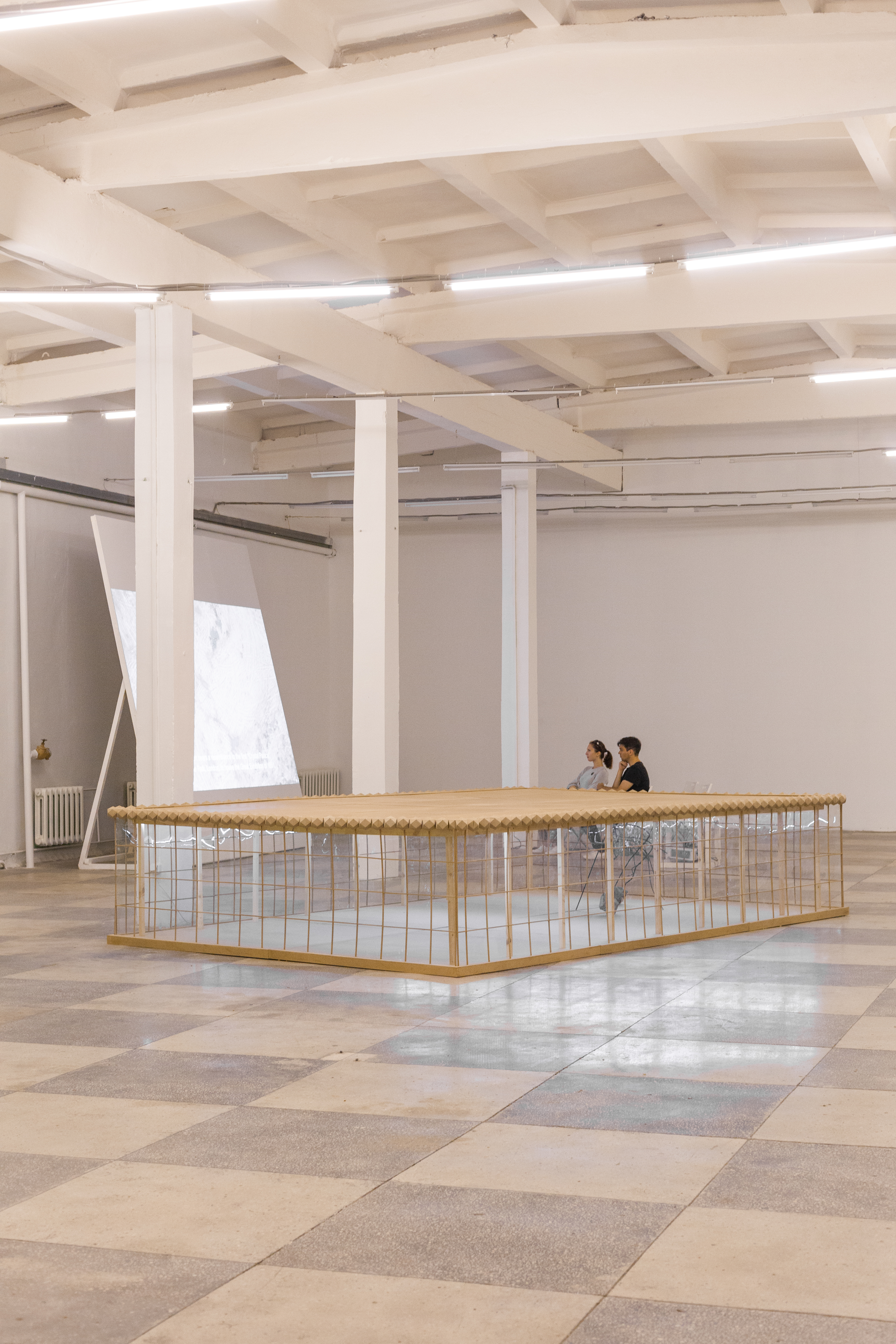

Crystal Palace
MDF, plexiglass, construction fittings, LED ribbon,
450 x 300 x 90 cm
The object "Crystal Palace" consists of two elements: a model of the recently destroyed building of VDNH (Exhibition of Achievements of National Economy) and construction fittings inserted into the model. The Exhibition of Achievements of National Economy was built in 1968 as an exhibitionary complex, representing the view of scientific, technical, agricultural and cultural achievements of the BSSR (Byelorussian Soviet Socialist Republic). In 2017 the pavilion was completely destroyed, and the land was sold to investors: biting irony on the modernist rejection of tradition and the past. In the Hramovich’s artwork the building becomes display with no entrance, which exhibits either "contemporary sculpture", or piece of armature of the ruined pavillion.
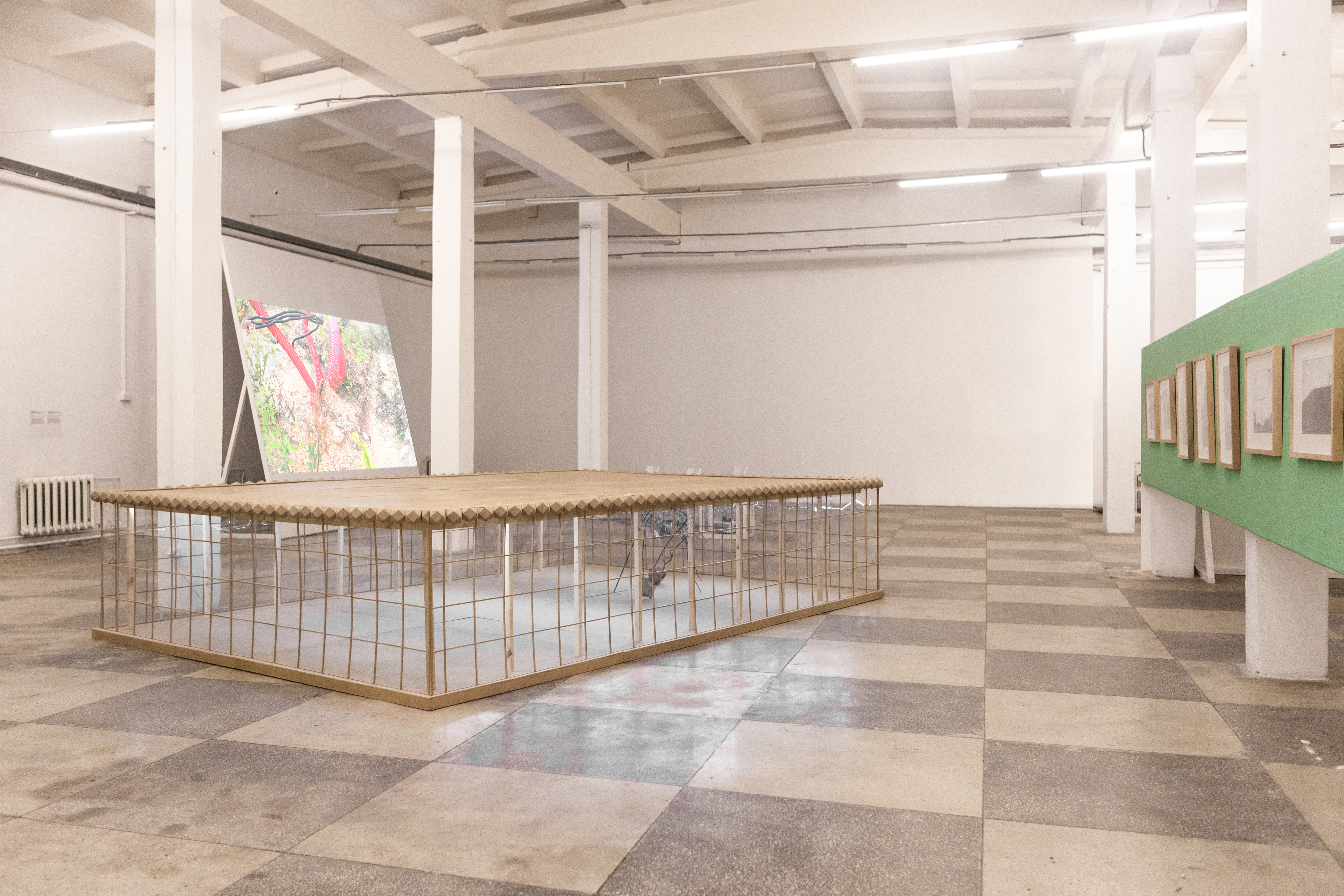

In Search of the Crystal Palace
Video, 12.03
In his video-work “In Search of the Crystal Palace” the artist addresses the history of late Soviet modernist architecture monuments, such as the VDNH (Exhibition of Achievements of National Economy) building, “Maskoŭski” bus terminal, the Belarusian Great Patriotic War Museum and others, recently demolished so as to sell the land to investors. He incorporates them into geological changes and the transformation of the matter and structure of the Earth’s crust. A drone hovers over the new urban horizon, depicting the landscape of destruction and reconstruction of Minsk.
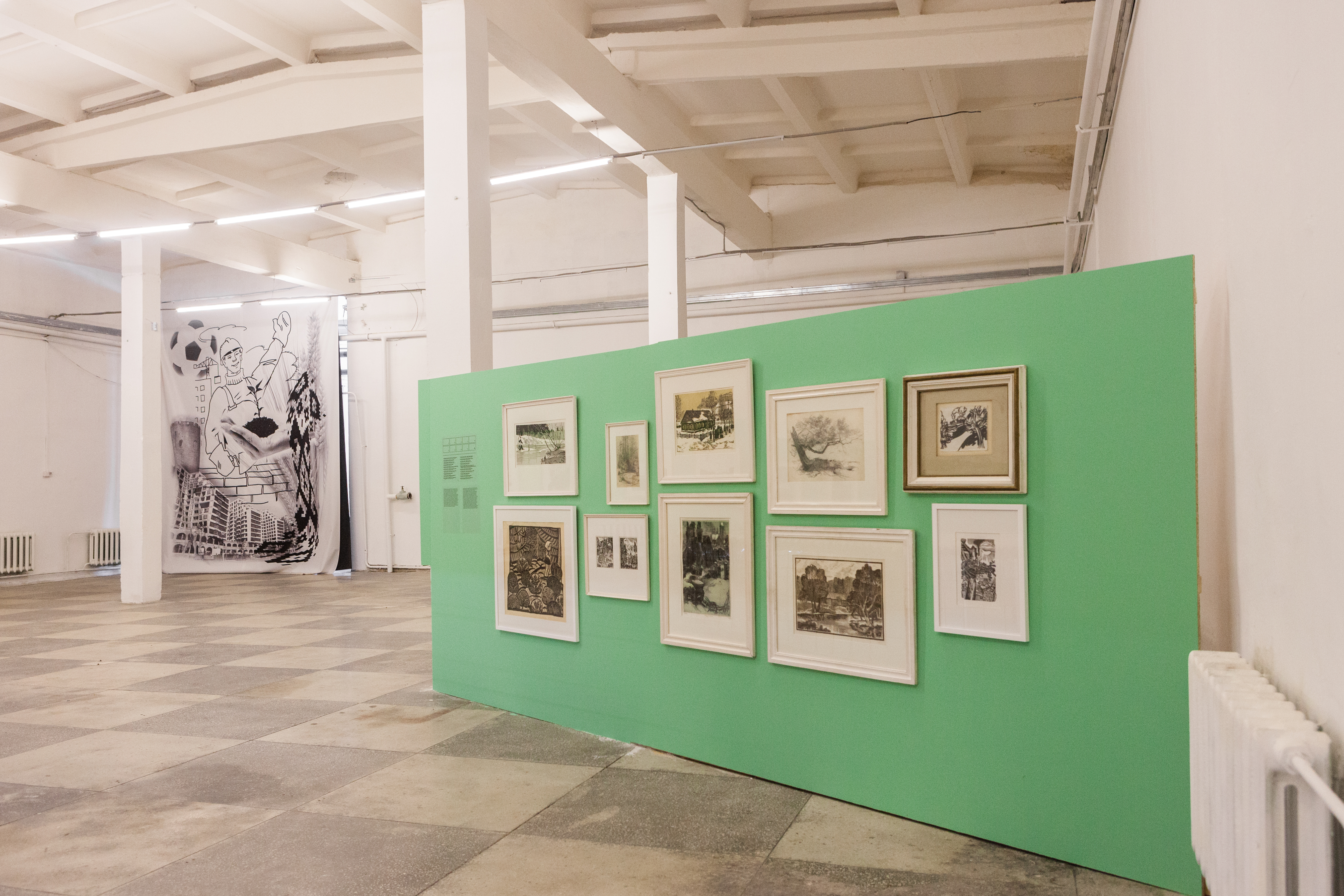
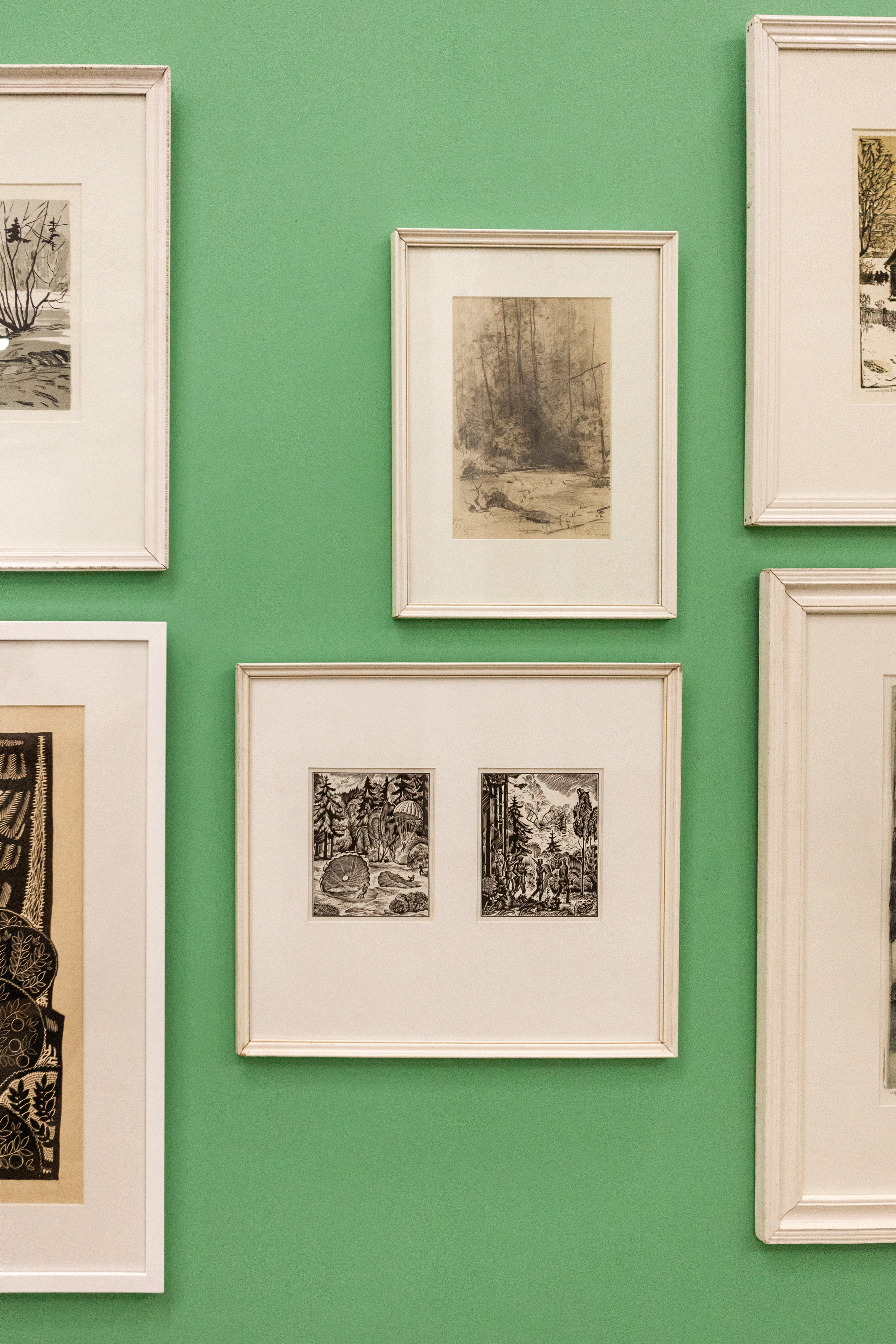
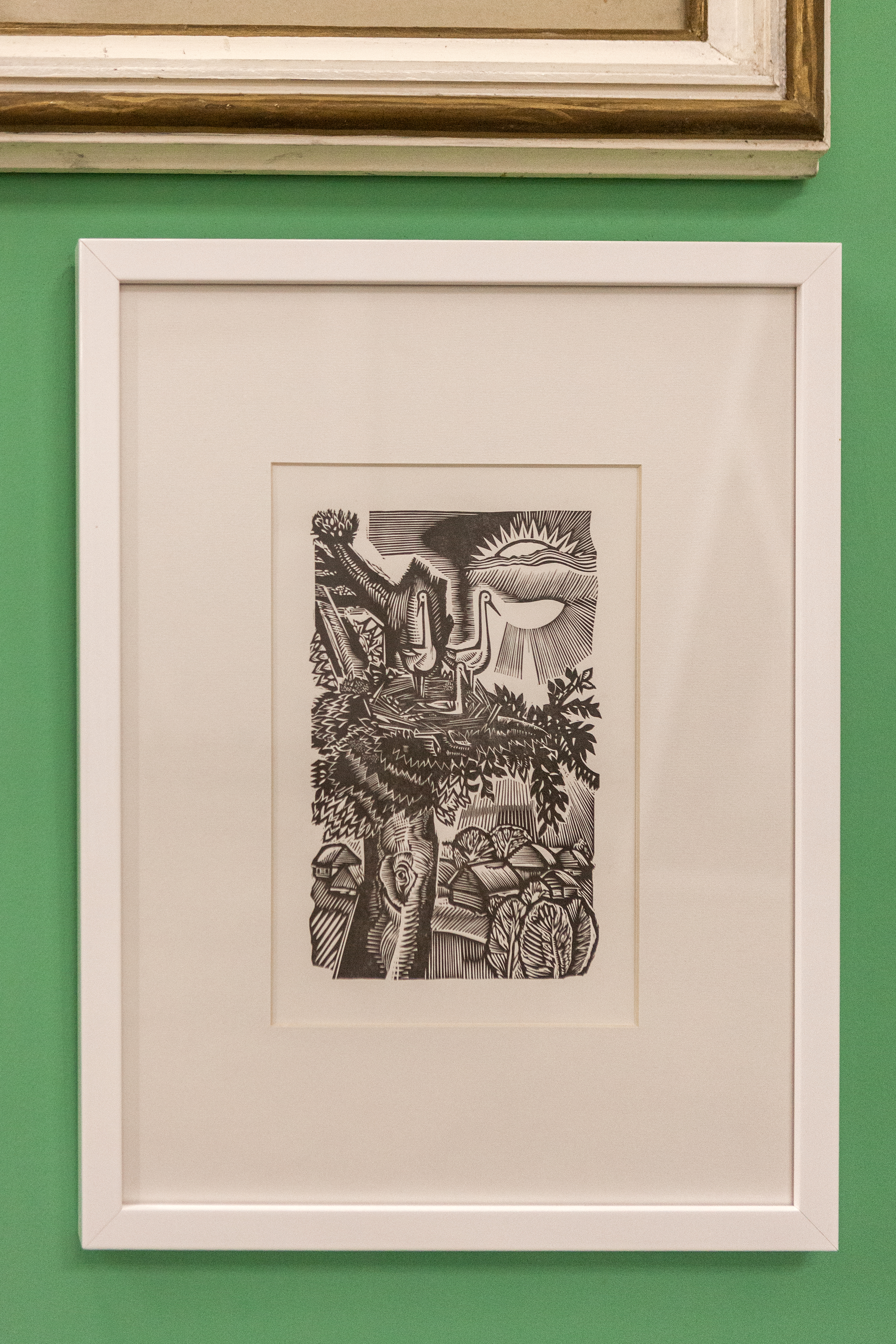
Yury Bulychev (1921-1976).
Palesse
Paper, pencil. 27 х 19 cm.1953.
Collection of Alexander and Inna Radaevs
Genadz Grak (1937).
Partisans
Two linocuts, 15 х 13 cm. 1960s. Collection of Genadz Grak
Palesse
Paper, pencil. 27 х 19 cm.1953.
Collection of Alexander and Inna Radaevs
Genadz Grak (1937).
Partisans
Two linocuts, 15 х 13 cm. 1960s. Collection of Genadz Grak
Vasily Sharangovich (1939-2021). Untitled
Linocut, 22 x 15 cm. 1960-70s (?)
Collection of Uladzimir Hramovich
Linocut, 22 x 15 cm. 1960-70s (?)
Collection of Uladzimir Hramovich
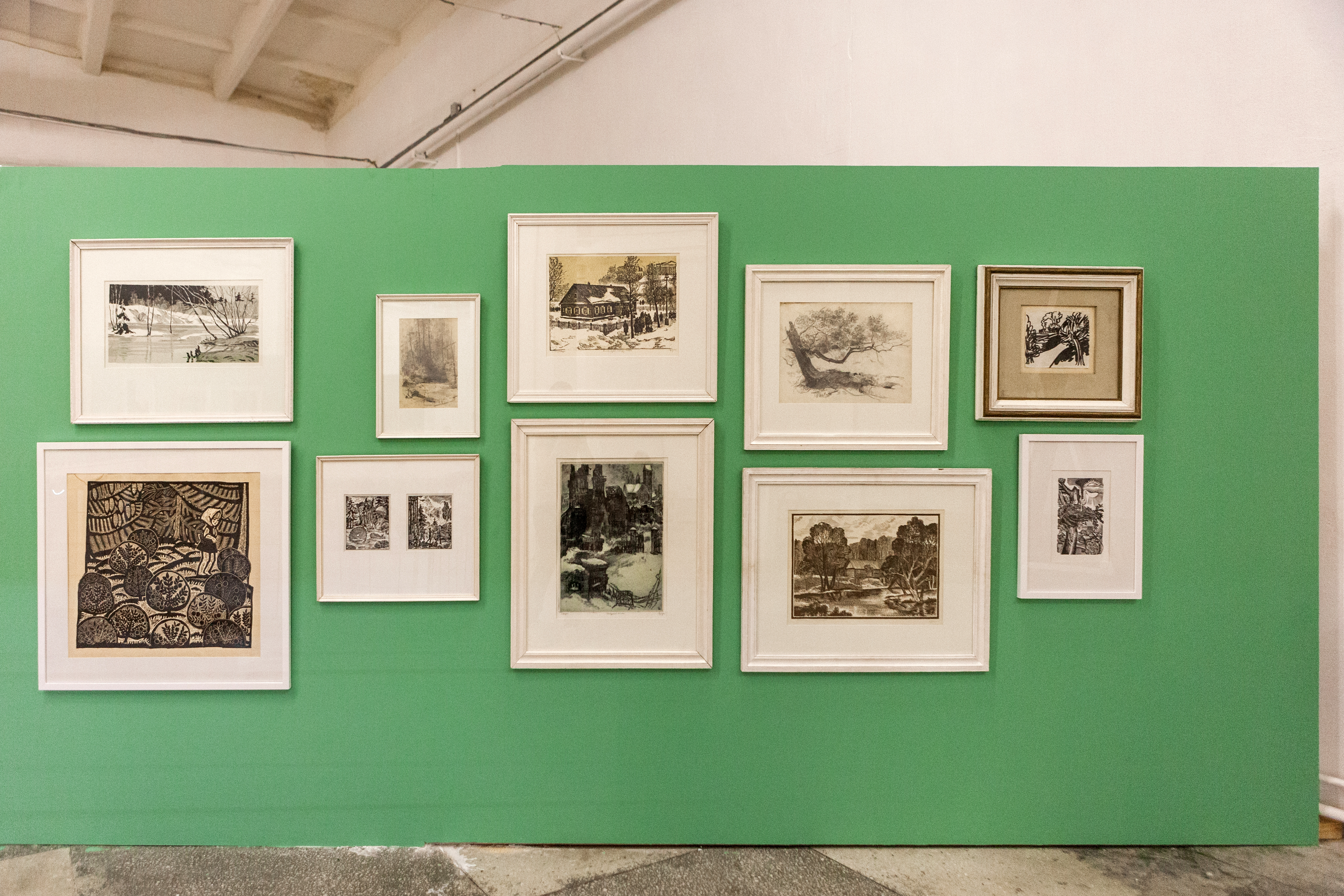
Collection of Belarusian graphics from the 1960s and the 1980s
This display represents a small collection of Belarusian graphics from the 1960s and the 1980s as a special form of representation of the space of the Belarusian city and nature. The description of the mass-production graphics of the 1960s underscored the change in landmarks in the art of thaw period: “Composite character replaces the concrete, conventional-associative solution of the composition sometimes substituting documentary fixation of events and facts”. The scholar William J. T. Mitchell noted that landscape as a cultural medium naturalizes a cultural and social construction, representing an artificial world as if it were simply given and inevitable. The artistic generalization and observation of the graphic artists of that time filled nature with authenticity and naturalness through quiet pastoral landscapes. Simultaneously being as an apolitical form of art, the landscape allowed the artist to "hide", to get lost in greenery forests and endless horizons away from ideology and politics. Hramovich refers to this graphic tradition in his artworks presented at the exhibition.

Untitled
Banner, 480 x 380 cm
Images on the building banner critically comment on the transformation of the urban environment, speculations on real estate market, privatization and visualization of the future and the past of the city in the cliched images that are spread in the visual culture of Minsk. The object receives a utilitarian function, separating the exhibition space from the other premises of the gallery, emphasizing the liminal characteristics of the building zones.
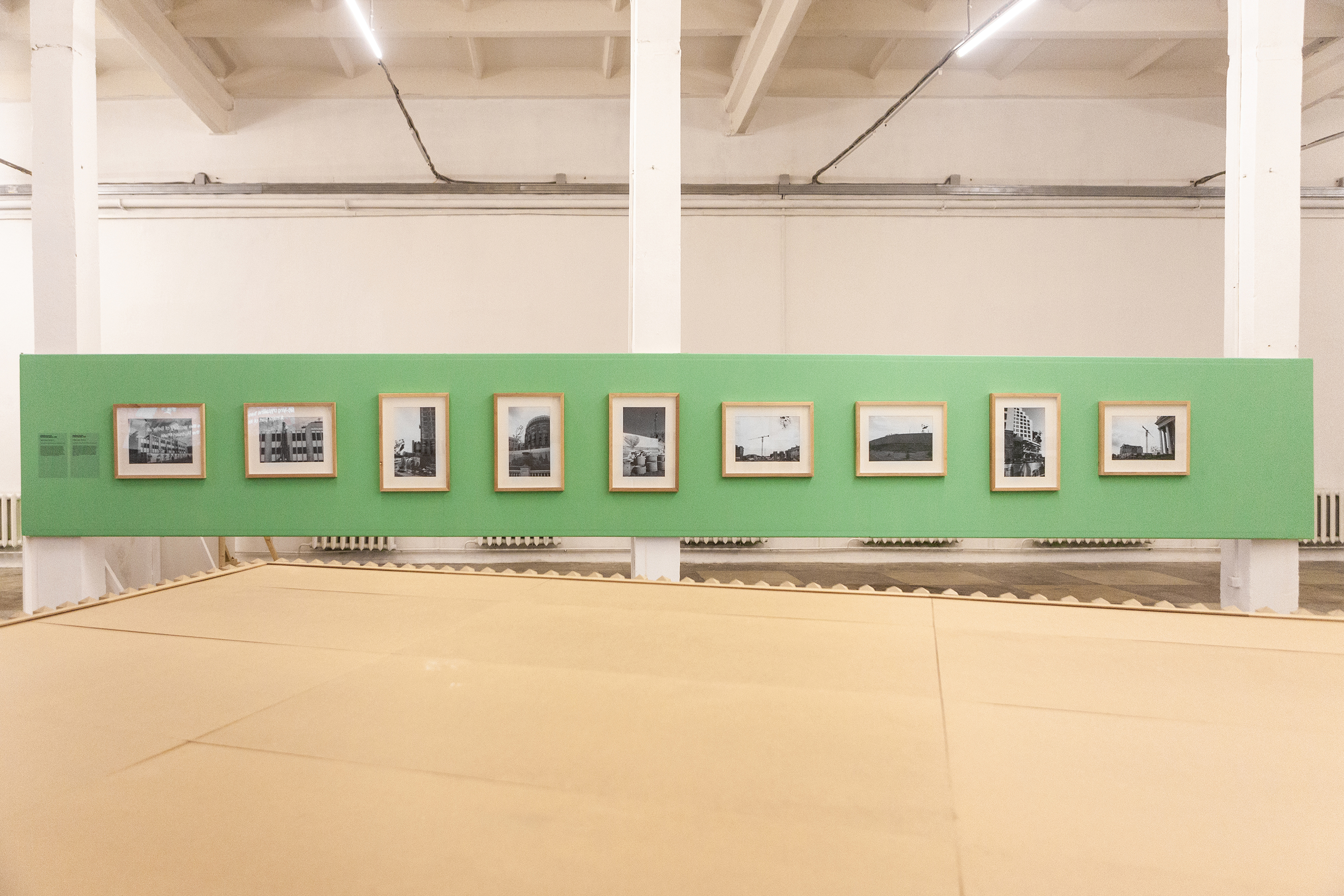
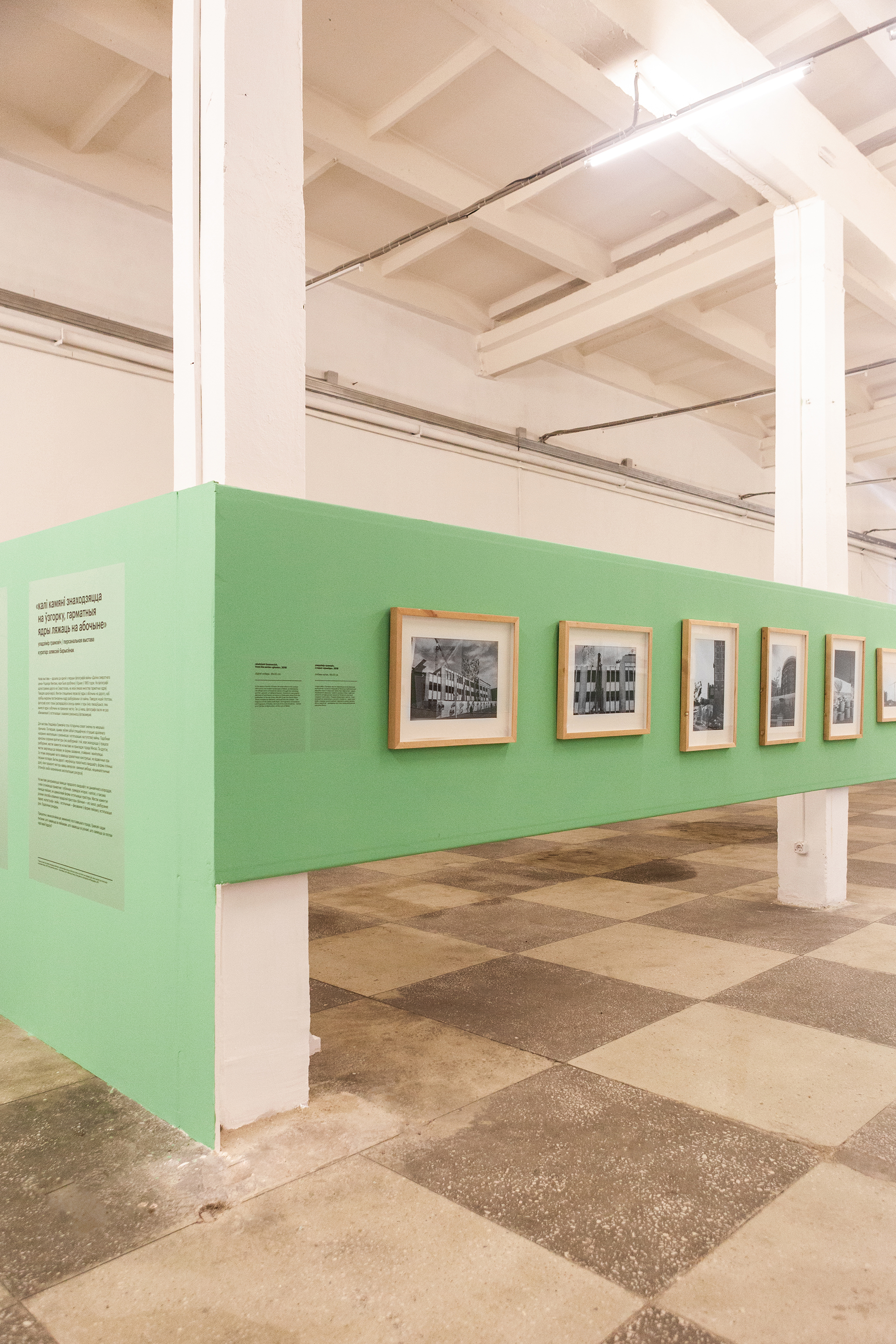


From the series Ghosts
Photo, ink, 46 x 30 cm
In the series of works "Ghosts" the artist refers to the postwar destruction and modern landscapes of Minsk, problematizing the official canon of historical memory through the mythology and the "specter" of defeated fascism. Hramovich uses graphic elements of anti-fascist caricatures of Belarusian artists from the publication of the war times "We Will Crush the Fascist Viper". These nondescript elements, removed from the context – the trajectory of the battle shell’s flight, the fragments of explosions and fragments of bodies, the hulls of the downed planes – remind us of the fear of destruction, of the ruins of Minsk.
Photo by Iryna Berezouskaya